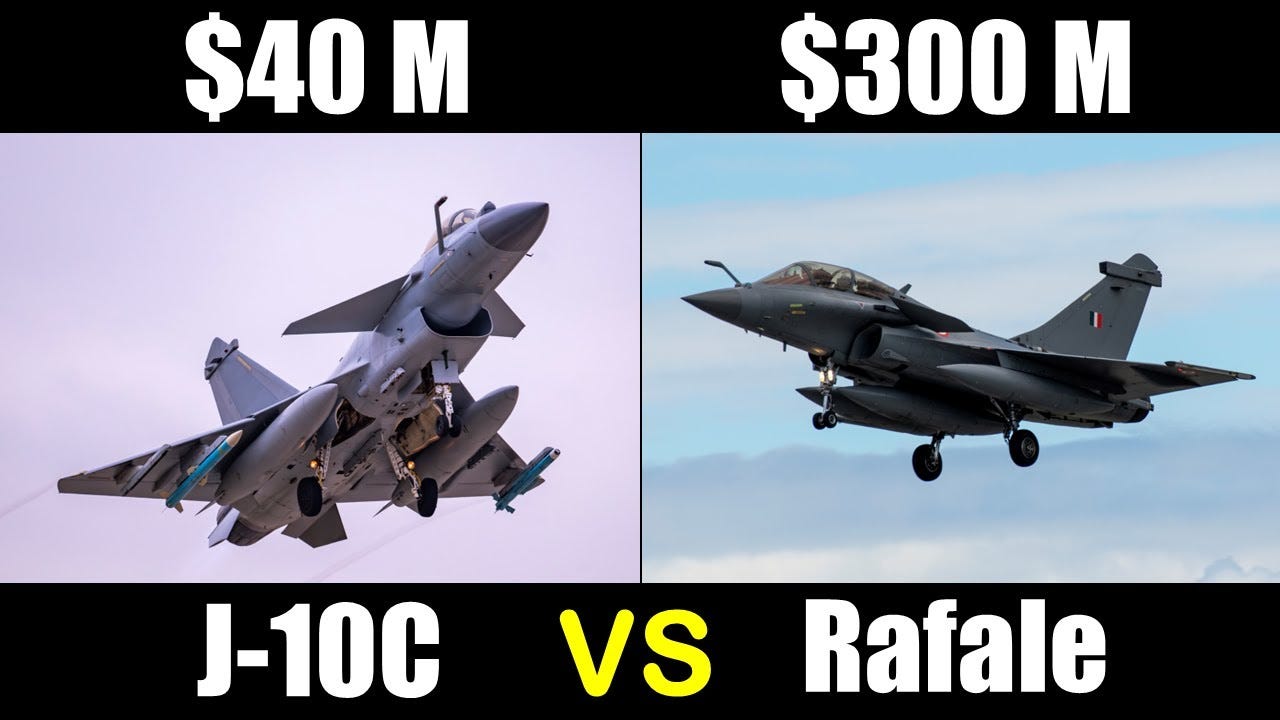After the recent India visit of the kurta-dressed and kohl-eyelinered Vice-President Vance, President Modi responded to a mysterious terrorist incident in Jammu and Kashmir President Modi sent two IAF wings composed of Russian and French fighters towards China ally Pakistan. There ensued a replay of Delhi’s 1962 attack on China, which also ended in disaster.
The IAF pilots, flying a motley assortment of expensive Western fighters, soon found themselves painted by Pakistani radars–long before their own missiles could be effective and, like the Israelis whose Air Force was thwarted in its attack on Iran, returned to base.
Outraged, President Modi fired his Air Force chief and replaced him with a ‘fighting commander’ who obediently renewed the attack. His pilots–as brave as their commander was stupid–pressed on after they had been detected and the PAF promptly shot down five–while suffering no losses. Modi sued for peace.
In truth, India’s pilots never stood a chance. Their mixed air fleet was not
electronically integrated and, with neither satellites nor AWACS to guide them, and armed with A2A missiles whose were half the IAF’s they would never get in range of their opponents.
The PAF J-10C fighters were tightly integrated with their missiles which outranged all Western counterparts, each other, their ZDK-03 Karakoram Eagle EWACs and their YLC-8E anti-stealth radar, all of which are Chinese made. Their Chengdu J-10C is a 4.5-generation, single-engine, multirole fighter with advanced avionics, AESA radar, a top speed is Mach 2.2 and a combat radius of 1,700 km. Thanks to its larger nose cross section and greater power, the J-10C’s radar, paired with its PL-15 missile range of 200–300 km, allows its pilots to detect and fire on its adversaries much earlier.
Though no US weapons participated, the encounter provides a rare opportunity to compare America’s $80 million F-16V, whose top speed is 140 mph slower and combat radius is 200 km shorter than the Chinese aircraft. Its AESA radar lacks both the range and Infrared Search and Track (IRST) of the J-10C and its AIM-120D AMRAAM missiles’ 180 km range is no match for the PL-15’s 300 km reach.
Fire Away!
“To carry out war three things are necessary: money, money and yet more money”. Marshal Trivulzio to Louis XII. 1499.
During its recent 6-week campaign to destroy the Houthi in Yemen, the United States Navy expended munitions costing over $1 billon and achieved nothing.
Not only did Pakistan spend a fraction of the Rafael’s cost on its J-10C fleet, but its munitions costs drew the attention of Defense Departments around the world: a single load of British A2A Meteor missiles for one aircraft for one mission costs $12 million. A comparable load of PL-15s costs $7 million. Multiply that by nine aircraft in an air wing flying three missions and, as U.S. Senator Everett McKinley Dirksen famously observed, “Pretty soon you’re talking about real money”.





